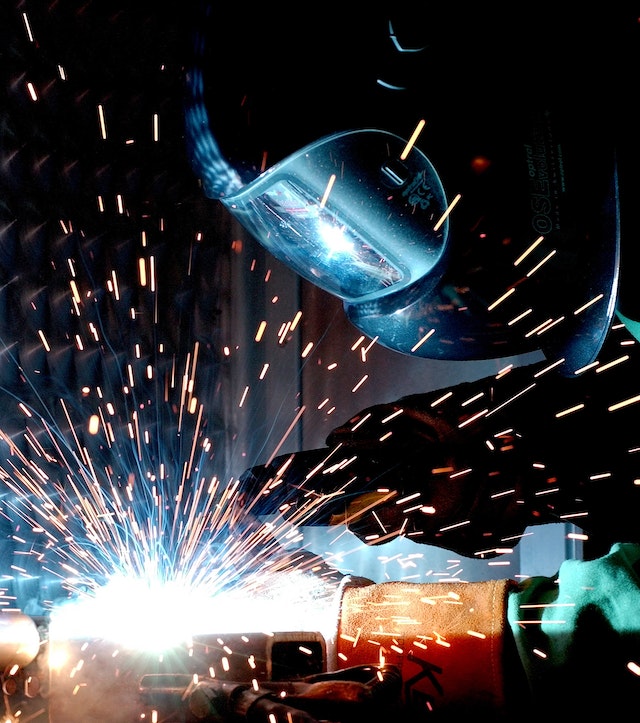
Manufacturing is the backbone of any business, and it’s essential to ensure that you have an effective manufacturing strategy in place. A well-executed manufacturing strategy can help you produce high-quality products quickly and efficiently, while a poorly executed one can lead to costly delays and subpar results. Below is an overview of the critical components of a successful manufacturing strategy and tips on improving your current strategies.
Review your Product
Reviewing your product is an essential part of improving the manufacturing process and ensuring that the quality of a product meets customer expectations. Through the review, manufacturers can identify areas where processes may be inefficient or need improvement and take action to address these areas.
Reviews also help identify potential product issues, such as design flaws, material defects, or manufacturing errors. Furthermore, reviews can provide invaluable customer feedback and help ensure that the product meets customer needs and expectations. By incorporating a review process into your manufacturing strategy, you can identify areas of improvement to create higher-quality products and improve customer satisfaction.
Research New Manufacturing Methods and Technologies
In this day and age, staying ahead of the competition means finding ways to optimize your manufacturing process. By leveraging the latest technological advancements, manufacturers can create more efficient processes that reduce costs and improve product quality. Additionally, by investing in research, companies can stay ahead of their competitors and remain competitive.
Research into new manufacturing methods and technologies also allows organizations to identify innovative solutions that can help them meet customer demands and exceed industry standards. For example, low-volume injection molding is a technology that has revolutionized to aid in plastic production. You can use them to create products with high accuracy, repeatability, and cost savings.
Consider your Volume
Volume is essential in determining how efficient and cost-effective your production process is. By understanding the relationship between volume and efficiency, you can optimize your production strategy to maximize output while minimizing costs.
Additionally, you can identify trends indicating opportunities or problems with certain aspects of your process by looking at volume levels over time. With a keen eye on changes in volume across different parts of the manufacturing cycle, you can ensure that you fix any potential issues before they become costly problems down the line.
Evaluate your Resources
Evaluating your resources can help you identify where you need to invest assets, whether in new machinery or personnel, and can also reveal areas of inefficiency or waste. Knowing the strengths and weaknesses of your resources allows you to craft strategies that will capitalize on the strengths and mitigate any potential weaknesses.
In addition to evaluating your resources, it is also essential to regularly review current production processes and procedures to ensure they are up-to-date with technological advances and industry standards. Taking a step back periodically can help you identify opportunities for improvement, streamlining or cost reduction.
Consider your Timeline
Knowing when a product should be ready and how long it will take to manufacture can help inform decisions about staffing, space requirements, and other factors that affect the outcome of a project. By understanding when each step in the process needs to happen, you can better plan and avoid costly delays or mistakes.
This also allows you to adjust plans if something doesn’t go according to schedule or circumstances change unexpectedly. With thoughtful planning and attention paid to timelines during all stages of production, manufacturers can ensure their products get delivered on time without compromising quality standards.
Assess your Risks
Companies must thoroughly understand their environment to identify potential risks that may affect the success of their production process. Risks can include anything from production delays to unexpected costs, so it’s essential to have a thorough understanding of the environment in which you are operating.
By assessing potential risks, companies can develop strategies that reduce or eliminate those risks while at the same time taking advantage of any opportunities that may arise. This includes having a clear understanding of customer needs and expectations, as well as getting prepared to handle unexpected events or external factors.
Remember that all types of businesses, from small start-ups to large corporations, need to think carefully about their production practices and choose the best ones for their operations. The world is ever-changing, and technology is evolving even faster. Therefore, businesses need to evolve their manufacturing techniques to stay competitive. Furthermore, remember that no matter what approach you take for your business’s production needs, looking internally at how you can improve it now or in the future is always helpful.
These are in fact impressive ideas in on the topic of blogging.
You have touched some good things here. Any way keep up wrinting.
Feel free to surf to my homepage … nordvpn coupons inspiresensation (http://t.co/)
350fairfax nordvpn special coupon code 2025
I have been browsing on-line greater than 3 hours
lately, but I by no means discovered any fascinating article like
yours. It is pretty price sufficient for me. In my view, if all site owners and bloggers made excellent content material as
you did, the internet can be a lot more helpful than ever before.
Hi there! I could have sworn I’ve been to this site before but after reading through some
of the post I realized it’s new to me. Nonetheless, I’m definitely delighted I found it and I’ll be bookmarking
and checking back frequently!
my website: eharmony special coupon code 2025